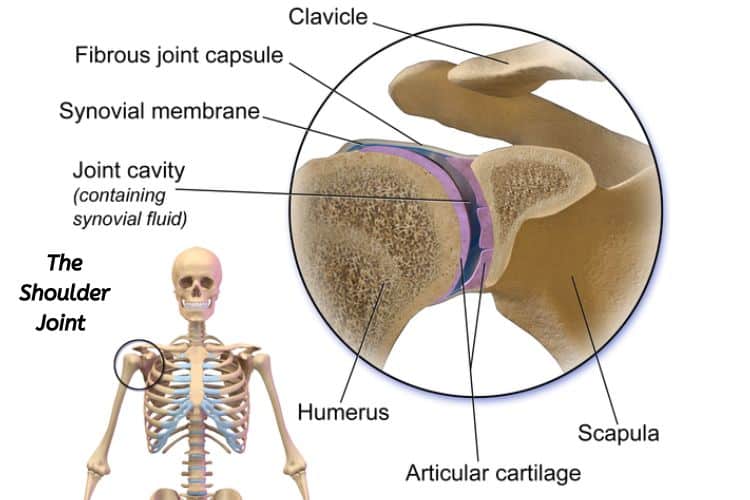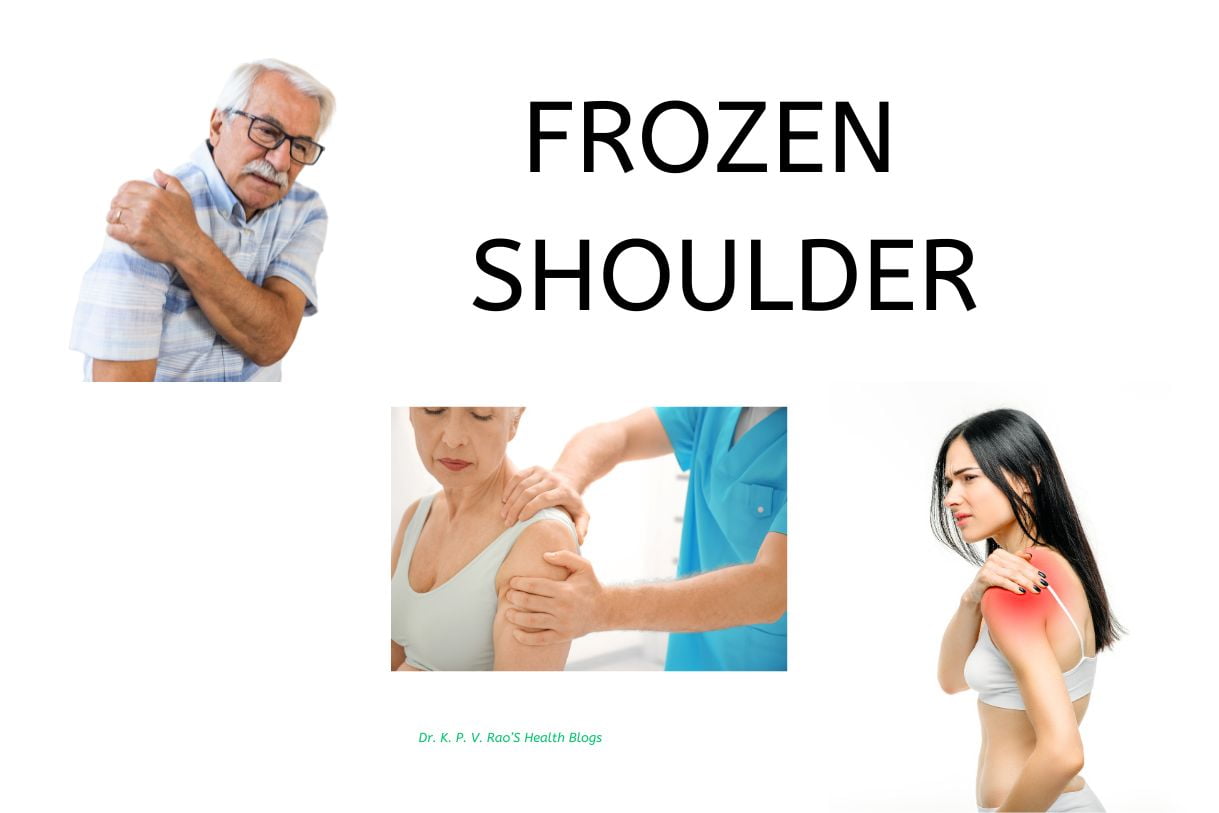Introduction
Are you aware of a condition called the frozen shoulder? If not, let me explain it in short by an example:
Mr. Sharma, a 48-year-old patient, visited my clinic a few days back with complaints of sore and stiff left shoulder.
On examination, I also found that the range of motion in his left shoulder was drastically reduced compared to right shoulder. On further questioning, he told me that this pain has been gradually increasing for the past 15 days.
Mr. Sharma travels by public transport bus frequently; sometimes, he has to stand holding the overhead support on the bus.
Due to traffic congestion plus the multiple speed breakers put up by the municipality, Mr. Sharma has been subjected to frequent jerks due to brakes applied by the bus driver. This has landed him in my clinic with his present condition- Frozen Shoulder.
Are you also experiencing restricted mobility and pain in your shoulder like that of Mr. Sharma? It could be a case of a frozen shoulder.
But don’t be afraid- this article will help you in understanding the causes, symptoms, and effective treatment options for this condition is crucial to finding relief.
We will delve into the world of frozen shoulders, providing you with the necessary knowledge to tackle it head-on.
What is frozen shoulder?

Frozen shoulder, clinically known as adhesive capsulitis, is a condition characterized by intense pain and stiffness in the shoulder joint.
The shoulder joint is made up of three bones [have a look at the picture above]:
- the upper arm bone (humerus)
- the shoulder blade (scapula), and
- the collarbone (clavicle).
The joint is surrounded by a capsule of connective tissue that holds everything together.
When this capsule thickens and tightens, it restricts the movement of the joint, causing pain and stiffness.
Causes of frozen shoulder
The exact cause of this ailment is unknown, but it often develops gradually and can be associated with various factors.
One possible cause is inflammation in the shoulder joint, which can lead to the thickening and tightening of the capsule.
Other potential causes include shoulder injuries, such as rotator cuff tears or fractures, which can initiate the inflammatory process.
Additionally, certain medical conditions like diabetes, thyroid disorders, and heart disease have been linked to an increased risk of developing frozen shoulders.
The 3 stages of Frozen shoulder
Frozen shoulder occurs gradually in three stages, namely-
Stage 1: The Freezing Stage
During the freezing stage of the frozen shoulder, there is increasing pain and stiffness in the shoulder joint.
Stage 2: The Frozen Stage
In the frozen stage, the pain may decrease, but the stiffness becomes more severe.
Stage 3: The Thawing Stage
In the thawing stage, the shoulder gradually regains its range of motion.
Risk factors for developing frozen shoulder
While anyone can develop frozen shoulders, certain individuals are more susceptible to this condition. Women are more commonly affected than men, and the risk increases with age.
It typically occurs between the ages of 40 and 60. People with certain medical conditions, such as diabetes or thyroid disorders, are also at a higher risk of developing the condition.
Additionally, individuals who have experienced shoulder injuries or surgeries are more prone to developing a frozen shoulder.
Symptoms of frozen shoulder
The symptoms of frozen shoulder can vary from person to person but generally include pain, stiffness, and limited range of motion in the shoulder joint.
The pain is often described as a dull ache and is usually more intense at night or when attempting to move the shoulder.
Stiffness can make it difficult to perform everyday activities such as reaching for objects or lifting the arm above the head.
As the condition progresses, the range of motion in the shoulder becomes increasingly restricted.
Diagnosis of frozen shoulder
If you suspect you have frozen shoulder, it is important to consult with a healthcare professional for an accurate diagnosis.
During the evaluation, your doctor will review your medical history and perform a physical examination of your shoulder.
They may also order imaging tests, such as X-rays or MRI scans, to rule out other conditions that may be causing your symptoms.
Based on the findings, they will be able to determine if you have frozen shoulder and develop an appropriate treatment plan.
Treatment options for frozen shoulder
Fortunately, there are effective treatment options available for a frozen shoulder. The goal of treatment is to relieve pain, improve shoulder mobility, and restore function.
The treatment approach may vary depending on the severity of the condition and individual factors. Common treatment options include physical therapy, pain management techniques, and medications.
Non- medical pain management techniques
Some effective pain management techniques for frozen shoulder include:
Heat therapy: Applying a heating pad or warm compress to the affected shoulder joint can help alleviate pain and increase flexibility.
Cold therapy: Using an ice pack or cold compress can help reduce inflammation and numb the pain temporarily.
Transcutaneous electrical nerve stimulation (TENS): This technique involves using low-voltage electrical currents to stimulate the nerves and reduce pain perception.
Acupuncture: The insertion of thin needles at specific points on the body can help relieve pain and promote healing.

Massage therapy: Gentle massages can help improve blood circulation, reduce muscle tension, and alleviate pain in the shoulder.
Stretching exercises: Performing gentle stretching exercises can help improve shoulder mobility and reduce pain over time.
Mind-body techniques: Practices like meditation, deep breathing exercises, and relaxation techniques can help manage pain by reducing stress and promoting a sense of well-being.
Remember to consult with a healthcare professional before trying any of these pain management techniques to ensure they are appropriate for your shoulder pain.
Physical therapy exercises for frozen shoulder
Physical therapy is often a first-line treatment for the frozen shoulder. A physical therapist will guide you through a series of exercises and stretches designed to improve shoulder mobility and reduce pain.
These exercises may include pendulum stretches, wall walks, and shoulder rotations.
It is important to perform these exercises regularly and as instructed by your physical therapist to achieve the best results.
Medications for relieving pain and inflammation
In some cases, over-the-counter pain relievers and anti-inflammatory medications may be recommended to help manage the pain and inflammation associated with a frozen shoulder.
Nonsteroidal anti-inflammatory drugs (NSAIDs) such as ibuprofen or naproxen can help reduce pain and swelling.
Your doctor may also prescribe stronger pain medications and/or a steroid injection to your shoulder if he feels it necessary.
Surgical options for severe cases of frozen shoulder
In severe cases of frozen shoulder where other treatment options have failed to provide relief, surgery may be considered.
There are several surgical procedures that can be performed, including arthroscopic release and manipulation under anesthesia.
Arthroscopic release involves making small incisions and using a camera and specialized instruments to cut through the tight capsule, allowing for improved shoulder movement.
Manipulation under anesthesia involves manually manipulating the shoulder joint while the patient is under anesthesia to break up scar tissue and improve range of motion.
Prevention and self-care tips for frozen shoulder
While it may not be possible to completely prevent a frozen shoulder, there are steps you can take to reduce your risk and manage the condition.
Maintaining good shoulder mobility through regular stretching and exercise can help prevent stiffness and improve range of motion.
If you have a medical condition such as diabetes or thyroid disorders, it is important to manage it properly to reduce the risk of developing a frozen shoulder.
Additionally, avoiding excessive strain or injury to the shoulder joint can help prevent the onset of a frozen shoulder.
Conclusion
In conclusion, a frozen shoulder can be a debilitating condition that affects your daily life.
Through physical therapy exercises, medications, or surgical intervention, there are effective ways to manage and treat a frozen shoulder.
If you are experiencing shoulder pain and limited mobility, don’t hesitate to seek medical attention and explore the options available to you.
Take control of your shoulder health and regain your freedom of movement.
Suggested reading
- Adhesive Capsulitis
- Mayo Clinic on Frozen Shoulder
Final Words
I hope you have learnt all about frozen shoulder today. Kindly promote by blog by sharing it to others. You can also click to tweet here-
Frozen Shoulder: Understanding the Causes, Symptoms, and Effective Treatment Options Share on XMy next article will be on natural ways to improve our metabolism and digestion. Till then-
Adios.

